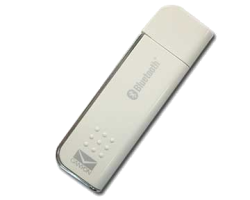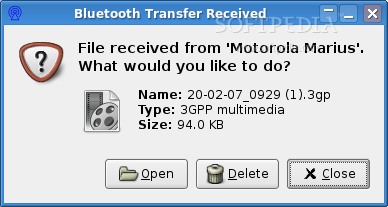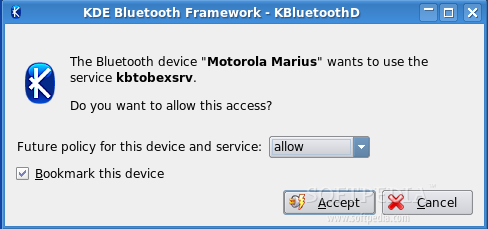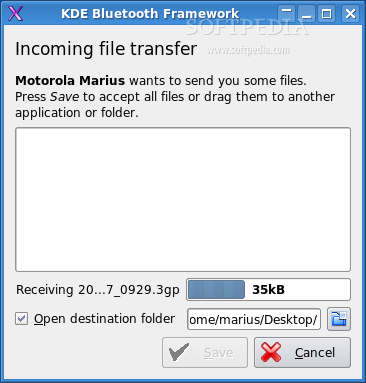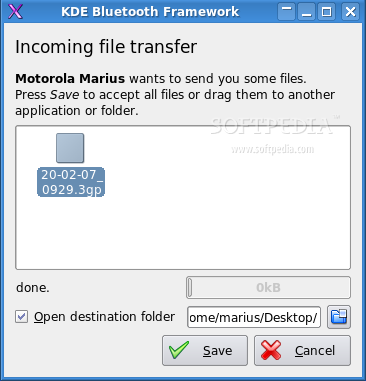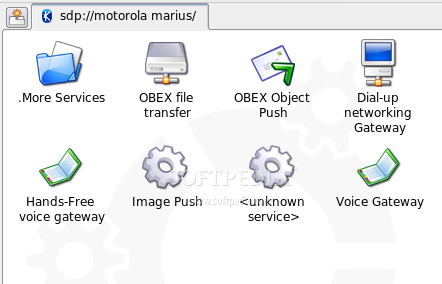Lets start first with the kernel:
apt-get install build-essential libncurses-dev kernel-package
cd /usr/src
wget http://www.kernel.org/pub/linux/kernel/v2.6/linux-2.6.20.tar.bz2
This will download the latest sources available, in my case linux-2.6.20.tar.bz2
cd /usr/src
tar -xjf linux-2.6.20.tar.bz2
cd linux-2.6.20
Now lets apply the Con Kolivas patches, these are patches designed to improve system responsiveness with specific emphasis on the desktop, but suitable to any workload.
wget www.kernel.org/pub/linux/kernel/people/ck/patches/2.6/2.6.20/2.6.20-ck1/patch-2.6.20-ck1.bz2
bzcat patch-2.6.20-ck1.bz2 |patch -p1
Copy the current kernel config and configuring the kernel
cp /boot/config-`uname -r` .config
make menuconfig
In “General Setup” activate:
- Support for paging of anonymous memory (swap)
- Support for prefetching swapped memory
In “Processor type and features“:
- Processor family Choose the model of your processor.
- set Preemption Model to Voluntary Kernel Preemption (Desktop)
- High Memory Support
- off - if you have less than 1 GB of RAM
- 1GB Low Memory Support - if you have 1GB of RAM
- 4GB - if you have more than 1GB of RAM
- set Timer frequency to 1000 Hz
In “Kernel hacking” uncheck “Kernel debugging“.
Now exit and save the configuration.
Making the new kernel package:
make-kpkg -initrd –revision=LinuxMonitor1 kernel_image kernel_headers modules_image
Installing the new kernel
cd ..
dpkg -i *.deb
HDParm
sudo gedit /etc/hdparm.conf
at the bottom add:
/dev/hda {
dma = on
io32_support = 1
}
/dev/cdroms/cdrom0 {
dma = on
interrupt_unmask = on
io32_support = 0
}
Concurrent Booting
Concurrent booting allows Ubuntu to take advantage of dual-core processors, as well as processors that hyperthread or multithread
or what ever the different companies call it now.
sudo gedit /etc/init.d/rc
Look through the file and you will find CONCURRENCY=none.
You must change it to: CONCURRENCY=shell
Prelink
Disclaimer: Prelinking might break your system! Only consider for use if you can risk the chance that your install might mess up. Most of all make sure that it gets to run the whole thing through the first time you prelink. Stopping in the middle can lead to system failure. Prelinking is a powerful device and needs to be used with care.
Prelink is no longer necessary in Feisty. Feisty uses a new linking mechanism called DT_GNU_HASH which dramatically speeds up the linking process without the need for continuously running this prelink program. Again, prelink is NOT useful starting from Feisty
How to enable prelink
1. Activate Ubuntu universe sources
2. Put this command into terminal to install Prelink:
sudo apt-get install prelink
3. Now put this command into the terminal:
sudo gedit /etc/default/prelink
4. Change where it says “PRELINKING=unknown” from unknown to “yes”
5. Adjust the other options if you know what the heck you’re doing. If it looks foreign to you, the defaults work well.
6. To start the first prelink (the longest one!), put this in terminal:
sudo /etc/cron.daily/prelink
Automatic Prelinking After Program Are Installed
One problem with prelinking in that when you install new programs those programs are not prelinked. So to avoid this problem when installing programs with apt-get or synaptic, use the directions below.
1. Put this in terminal:
sudo gedit /etc/apt/apt.conf
2. When the file opens in Gedit, put this line at the end of the file and save (even if the file has no content before you add the line):
DPkg::Post-Invoke {”echo Running prelink, please wait…;/etc/cron.daily/prelink”;}
General Notes About Prelinking
In the future, prelink performs a quick prelink (a less-than-1-minute procedure on most systems) daily, usually at midnight. Every 14 days, or whatever you changed it to be, a full prelink will run.
If you just did a major apt-get upgrade that changed systemwide libraries (i.e. libc6, glibc, major gnome/X libs, etc etc etc) and experience cryptic errors about libs, rerun step 6.
To undo prelink, change step 4 from yes to no, then rerun step 6.
Prelinking will make the binaries it prelinks change, so it’s not appropriate if you have tripwire or another checksum-based IDS system, or if you do incremental or differential backups to save on space.
Services
*Note you might not have all these services on your box.
To enable/disable services go to System -> Administration -> Services
1. acpi-support - leave it on.
2. acpid - The acpi daemon. These two are for power management, quite important for laptop and desktop computers, so leave them on.
3. alsa - If you use alsa sound subsystem, yes leave it on. But if you have the service below, its safe to be off. The default is off when alsa-utils is on.
4. alsa-utils - On my system, this service supercedes the alsa, so I turn off the alsa and turn this on at S level.
5. anacron - A cron subsystem that executes any cron jobs not being executed when the time is on. Most likely you’ve probably turned your computer off when a certain cron job time is ready. For example, updatedb is scheduled at 2am everyday, but at that moment, you computer is off, then if anacron service is on, it will try to catch up that updatedb cron.
6. apmd - If you computer is not that old which can’t even support acpi, then you may try to turn this off.
7. atd - like cron, a job scheduler. I turned it off.
8. binfmt-support - Kernel supports other format of binary files. I left it on.
9. bluez-utiles - I turned it off. I don’t have any bluetooth devices.
10. bootlogd - Leave it on.
11. cron - Leave it on.
12. cupsys - subsystem to manager your printer. I don’t have one so I turned it off, but if you do, just leave it on.
13. dbus - Message bus system. Very important, leave it on.
14. dns-clean - Mainly for cleaning up the dns info when using dial-up connection. I don’t use dial up, so I turn it off.
15. evms - Enterprise Volumn Management system. I turned it off.
16. fetchmail - A mail receving daemon. I turned it off.
17. gdm - The gnome desktop manager. I turned it off anyway since I get use to boot to console first. This is up to you if you want to boot directly to GUI.
18. gdomap - You can turn it off.
19. gpm - Mouse support for console. If you feel you’d better have a mouse on console, go turn it on.
20. halt - Don’t change it.
21. hdparm - tuning harddisk script, should be on.
22. hibernate - If your system support hibernate, leave it on. Otherwise, its useless for you.
23. hotkey-setup - This daemon setup some hotkey mappings for Laptop. Manufacturers supported are: HP, Acer, ASUS, Sony, Dell, and IBM. If you have a laptop in those brands, you can leave it on, otherwise, this might not have any benefits for you.
24. hotplug and hotplug-net - activating hotplug subsystems takes time. I’d consider to turn them off.
25. hplip - HP printing and Image subsystem. I turned it off.
26. ifrename - network interface rename script. Sounds pretty neat but I turned it off. Mainly for managing multiple network interfaces names. Since I have a wireless card and an ethernet card, they all assigned eth0 and ath0 from kernel, so its not really useful for me.
27. ifupdown and ifupdown-clean - Leave it on. They are network interfaces activation scripts for the boot time.
28. inetd or inetd.real - take a look your /etc/inetd.conf file and comment out any services that you don’t need.
29. klogd - Leave it on.
30. laptop-mode - A service to tweak the battery utilization when using laptops. You can leave it on.
31. linux-restricted-modules-common - You need to see if you really have any restricted modules loaded on your system. I’d leave it on.
32. lvm - I don’t use it so I turned it off. Leave it on if you *DO* have lvm.
33. makedev - Leave it on.
34. mdamd - Raid management tool. I don’t use it so I turned it off.
35. mdamd-raid - Raid tool. If you don’t have Raid devices, turn it off.
36. module-init-tools - Load extra modules from /etc/modules file. You can investigate your /etc/modules file and see if there is any modules that you don’t need. Normally, this is turned on.
37. mountvirtfs - mount virtual filesystems. Leave it on.
38. networking - bring up network interfaces and config dns info during boot time by scaning /etc/network/interfaces file. Leave it on.
39. ntpdate - Sync time with the ubuntu time server. Leave it on if you want.
40. nvidia-kernel - I compiled the nvidia driver by myself, so its useless for me now. If you use the ubuntu nvidia driver from the restrict modules, just leave it on. 41. pcmcia - pcmcia device - useless if you are using desktop which doesn’t have pcmcia card. So in that case, turn it off please.
42. portmap - daemon for managing services like nis, nfs, etc. If your laptop or desktop is a pure client, then turn it off.
43. powernowd - client to manage cpufreq. Mainly for laptops that support CPU speed stepping technology. Normally, you should leave it on if you are configuring a laptop, but for desktop, it might be useless.
44. ppp and ppp-dns - Useless to me. I don’t have dial-up.
45. readahead - It seems readahead is a kind of “preloader”. It loads at startup some libs on memory, so that some programs will start faster. But it increases startup time for about 3-4 seconds. So, you can keep it… or not. I tested and I just didn’t feel difference loading programs. So I decided to turn it off. If you have a reason to keep it on, please do so.
46. reboot - Don’t change it.
47. resolvconf - Automatically configuring DNS info according to your network status. I left it on.
48. rmnologin - Remove nologin if it finds it. It wouldn’t happen on my laptop, so I got rid of it.
49. rsync - rsync daemon. I don’t use it on my laptop, so turned it off.
50. sendsigs - send signals during reboot or shutdown. Leave it as it is.
51. single - Active single user mode. Leave it as it is.
52. ssh - ssh daemon. I need this so I turned it on.
53. stop-bootlogd - stop bootlogd from 2,3,4,5 runlevel. Leave it as it is.
54. sudo - check sudo stauts. I don’t see any good to run it everytime on a laptop or desktop client, so I turned it off.
55. sysklogd - Leave it as it is.
56. udev and udev-mab - Userspace dev filesystem. Good stuff, I left them on.
57. umountfs - Leave it as it is.
58. urandom - Random number generator. Might not useful but I left it on.
59. usplash - Well, if you really want to see the nice boot up screen, leave it as it is.
60. vbesave - video card BIOS configuration tool. Its able to save your video card status. I left it on.
61. xorg-common - setup X server ICE socket. Leave it as it is.
62. adjtimex - This is a kernel hw clock time adjusting too. Normally, you shouldn’t see this on your boot up list. In very rare case if you do see its on your boot up process, then there might be a reason why it is on, so better leave it that way. In my case, it is off.
63. dirmngr - A certification lists management tool. Work with gnupg. You will have to see if you need it or not. In my case, I turned it off.
64. hwtools - A tool to optimize irqs. Not sure what’s the benefits of turning it on. In my case, I turned it off.
65. libpam-devperm - A daemon to fix device files permissions after a system crash. Sounds pretty good, so I left it on.
66. lm-sensors - If you matherboard has builtin some sensor chips, it might be helpful to see hw status via userspace. I ran it and it said “No sensors found”, so I turned it off.
67. screen-cleanup - A script to cleanup the boot up screen. Well, turn on or off is up to you. In my case, I left it on.
68. xinetd - A inetd super daemon to manage other damons. In my system, the xinetd is managing chargen, daytime, echo and time (find them from /etc/xinetd.d dir), I care none of them, so I turned it off. If you do have some important services configured under xinetd, then leave it on.










 Install StarDict
Install StarDict
 Download
Download  Download one of the dictionaries, e.g.
Download one of the dictionaries, e.g. 
 The result will be three files
The result will be three files You will find StarDict in menu Application > Accessories
You will find StarDict in menu Application > Accessories



